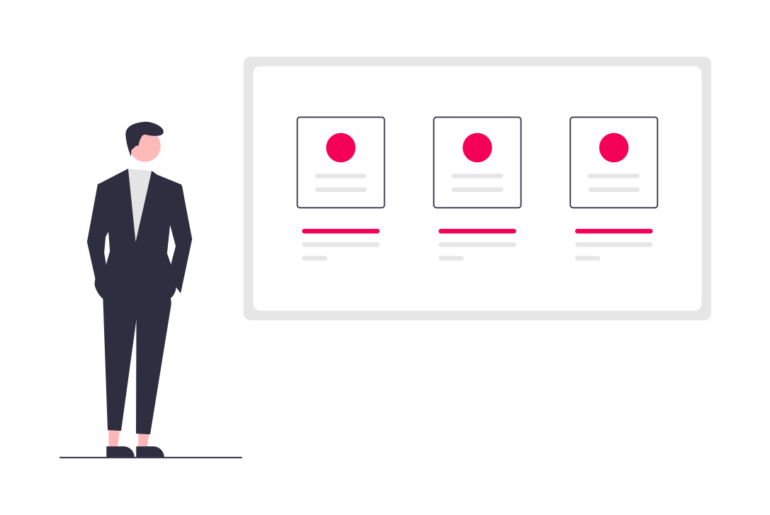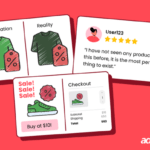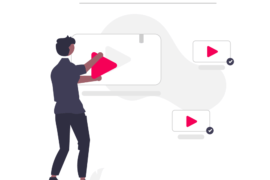The definition of premium and remnant inventory varies widely. For instance, some consider the ad units above the fold to be premium inventory and non-targeted ad units to be remnant.
In-house definitions aside, generally speaking, everything sold at a premium (high) price is a premium inventory and what’s left is remnant.
In this post, we’re going to share tips to manage remnant inventory by first understanding what it is, and then describing some best practices.
What Does Remnant Inventory Actually Mean?
Remnant inventory is the left-over inventory that publishers were unable to sell via their premium deals like direct ad sales.
For example: A publisher has a deal with an advertiser to provide him with 500K impressions in a month. But ends up generating 600K impressions for that month. The remaining 100K impressions are cumulatively called remnant inventory.
This is a simple example, but if we add more specifications—ad size (300×250), ad placement (above the fold), targeting requirements (user with desktop device)—you get a clearer idea what remnant inventory might be described.
Ideally, publishers would want to monetize every impression and this is when managing remnant inventory efficiently becomes important.
Difference Between Premium and Remnant Inventory
Before diving into the tips to manage remnant inventory, let’s first clearly understand in what ways it is different from premium inventory.
| Premium Inventory | Remnant Inventory | |
| Description | Part of inventory that publisher is able to sell directly to advertisers | Part of inventory left after premium deals are done |
| Monetization opportunity | Since, with premium inventory publishers offer customized targeting options, in return, they can ask for a better CPM as well | Remnant inventory are generally sold in bulk by conducting real-time auction, hence CPMs are set as per industry standards |
| Type of advertisers | Big brands invest in premium inventory | Ideal for small and medium-size advertisers. However, sometimes bought by large publishers as well to broaden the audience circle |
| Parties involved | Publisher, advertiser, and their ad servers | Apart from publishers and advertisers, remnant inventory requires help from an ad network, SSP, and ad exchange for better monetization |
When creating line items, premium deals generally have higher priority than RTB auctions. Basically, when an impression appears it first goes to a premium buyer, if the impression matches the requirement, then a sale happens. Otherwise, RTB takes control of the impression to find the next best match.
Best Practices to Manage Remnant Inventory
Just because an impression doesn’t match the requirements of your premium deal doesn’t mean it has no value. Chances are there are advertisers who are looking for this impression and willing to pay a good price for it.
In such a case, you can optimize your inventory to make most out of remnant impressions. Here are the best practices to help you with the same:
- Try preferred deal: Preferred deal offers a chance to publishers to maximize their impression revenues before they take them to the open market. Publishers can allow advertisers to buy the inventory at a negotiated fixed price after having a look at it. These advertisers are likely to pay better than real-time bidders and hence, this improves the chances to maximize the yield from remnant inventory.
- Enable header bidding: Header bidding is an RTB auction that sends simultaneous bids to multiple bidders. Since publishers have control over who gets to bid, they can control the quality of demand, and hence ensure better yield. You might w want to also look into hybrid header bidding, which allows publishers to increase bid competition enabling both server-side and client-side auctions to run in the same instance.
- Partner with multiple demand partners: As mentioned above, the more demand you have, the more competitive your ad auctions will be. Therefore, it is recommended to publishers to partner up with multiple demand partners, test their performance, and move to the next one if one (or more) doesn’t work. It is also advised to add demand partners with specialties in handling mobile inventory, video inventory, native ads, and/or in particular geography; to better monetize different types of audience.
- Choose selling model carefully: As the number of impressions increases, publishers start investing other monetization methods to improve their profit — video ads, email newsletter ads, affiliate links, etc. For each different strategy, publishers need a different monetization model. For instance, display advertising works best with CPM model, whereas affiliate ads work primarily on the CPA model. Focus on what works best for the buyer and design the selling model accordingly.
- Enable targeting: Even when buying remnant impressions, advertisers want users to be a good match for their ad campaigns. Enabling targeting for ad units ensures that. A targeted ad unit with a good viewability score is more valuable by default. But make sure the user allows you to show him/her targeted ads as per the latest privacy norms.
- Enable fallback: Finally, if real-time auction is unable to fill the impression, then you have a case of unfilled impression. To reduce loss of impressions, publishers are advised to set up fallbacks. If publishers are unable to generate revenue out of an impression via premium and remnant deals, then best to use this impression for self-promotion—banner of upcoming webinar or a new product launch.
Tips to Find Relevant Demand for Remnant Ad Inventory
If you have healthy traffic and a good viewability score, yet a major chunk of your inventory is unfilled, then chances are your demand pool is too small. In such a case, you need to add and optimize your demand partners.
Here are some tips that can help you with the same:
- Audience segmentation: Segmented inventory is likely to be sold more quickly than non-segmented one. Even with real-time bidding, advertisers want to know what kind of audience they are investing in. And a segmented inventory does exactly the same—telling advertisers about general traits of users.
- Invest in demand-path optimization: Demand-path optimization helps publishers and their SSPs understand the buying behavior of advertisers. With this information, publishers can learn about the buyers that often invest in your inventory and pitch them the inventory directly for a fixed price as a direct deal or preferred deal. Moreover, it gives an insight into the performance of ad placements and buyers interested in them. This can further help publishers attract more buyers.
- Price floor optimization: Setting it too low will increase ad fraud and too high will result in unfilled impressions. Remember, price floors requires constant monitoring and revision to strike a balance between profitability and optimum fill rate.
Conclusion
Technology now enables publishers to sell a large chunk of their inventory efficiently via RTB. Also, it requires less human involvement than direct deals. This allows publishers of all sizes to sell their remnant inventory, while ensuring good yield.
The underlined statement is to sell each impression at its maximum possible value, while avoiding any unfilled impressions on webpages.

Deepak has a keen eye for detail and a deep understanding of the ad tech landscape. Whether it’s through in-depth articles, thought-provoking insights, or compelling storytelling, he’s dedicated to helping people navigate the complex world of ad tech with the simplicity of his words.







